Optimist Sailboat Build
by superdave.morris in Outside > Boats
188901 Views, 343 Favorites, 0 Comments
Optimist Sailboat Build






In 1947 a gentleman named Clark Mills designed a small sail boat for kids to learn to build and sail called the Optimist. This boat was designed to be built from 3 sheets of plywood, with basic woodworking abilities. As time progressed, builders began to modify the boats to gain speed advantages - as happens with all vehicles.
In 1995 the International Optimist Association took the boat back to its roots and a set of dimensions were compiled to retain an exact shape of the boat, so as to remove design advantages from one boat to another. The Optimist is tightly controlled now with over 60 measurements and tolerances of the hull are generally +/- 5 mm. The tolerances do not allow the builder to exploit the possible variations of shape of the hull, but do allow a competent builder to construct a legal racing hull.
Half Moon Bay Yacht Club has a summer youth sailing camp. Through the years we have trained many a young boy or girl to rig and sail the small boats available to us. Normally in an older Laser or Coronado 15. In 2011, the sailing program decided that the Optimist had a place in our sailing fleet to allow the younger kids (7-15) to rig, launch, sail and retrieve the boats themselves while under adult supervision. We set about looking at the building of wood/epoxy Optimist sailing boats. We quickly focused on making racing legal hulls so as to be competitive with other surrounding sailing clubs. This is where the accuracy and repeatability of the ShopBot CNC router at TechShop of Menlo Park www.techshop.ws became an invaluable tool in our fleet building. I made it at TechShop. Due to the close tolerances allowed, and the desire to have an almost identical fleet of boats, the ShopBot fit the bill to the letter. Once I redrew the plans into CAD drawings and transferred to cut files the different parts of the boats were identical. Each group of people that wanted to build a boat only had small amounts of fitting, beveling and gluing to accomplish, with very little use of dangerous equipment needed and quick progress to show for their efforts, so kids fit right into the task of building boats.


The jig produced on the ShopBot retains the correct shape and supports the boat, while it is being built, to retain the exact design measurements. The plans for the boat can be found from many sources for free on the internet. Plans are available in many languages, as well. One such source is http://www.optiworld.org/Woodguide05.pdf
Another guide to building an optimist is http://www.burcotboats.co.uk/howToBuild.pdf , as well as half a dozen other well written articles on the internet. But none provide CAD quality drawings or files to work with modern computer controlled machine tooling. Well, here they are: The jig as well as the major parts of the boat. The jig sides , mast step, rudder, dagger board , dagger board case ends and doubler pieces are made from 18mm or 3/4" ACX or marine grade plywood; (1219.2mm x 2438.4mm) 48" x 96".
Now to get started, the jig we have designed is the exact dimensions of a finished hull shape. Both ends of the jig have interlocking pieces to allow for inserting and removing as needed during the building of the boat. The cross members are standard 2" x 4" cut to 44" long and with a 3/4" dado 8" to each side of center to fit into the grooves of the forms. These should be cut so as to be flush with the top of the form and screwed into place to prevent movement. The bottom boards provide a stable platform for the jig to sit on. The jig should be placed on a flat surface for the build, as distortion to the jig will transfer to the boat being built. Save the scraps for blocking.

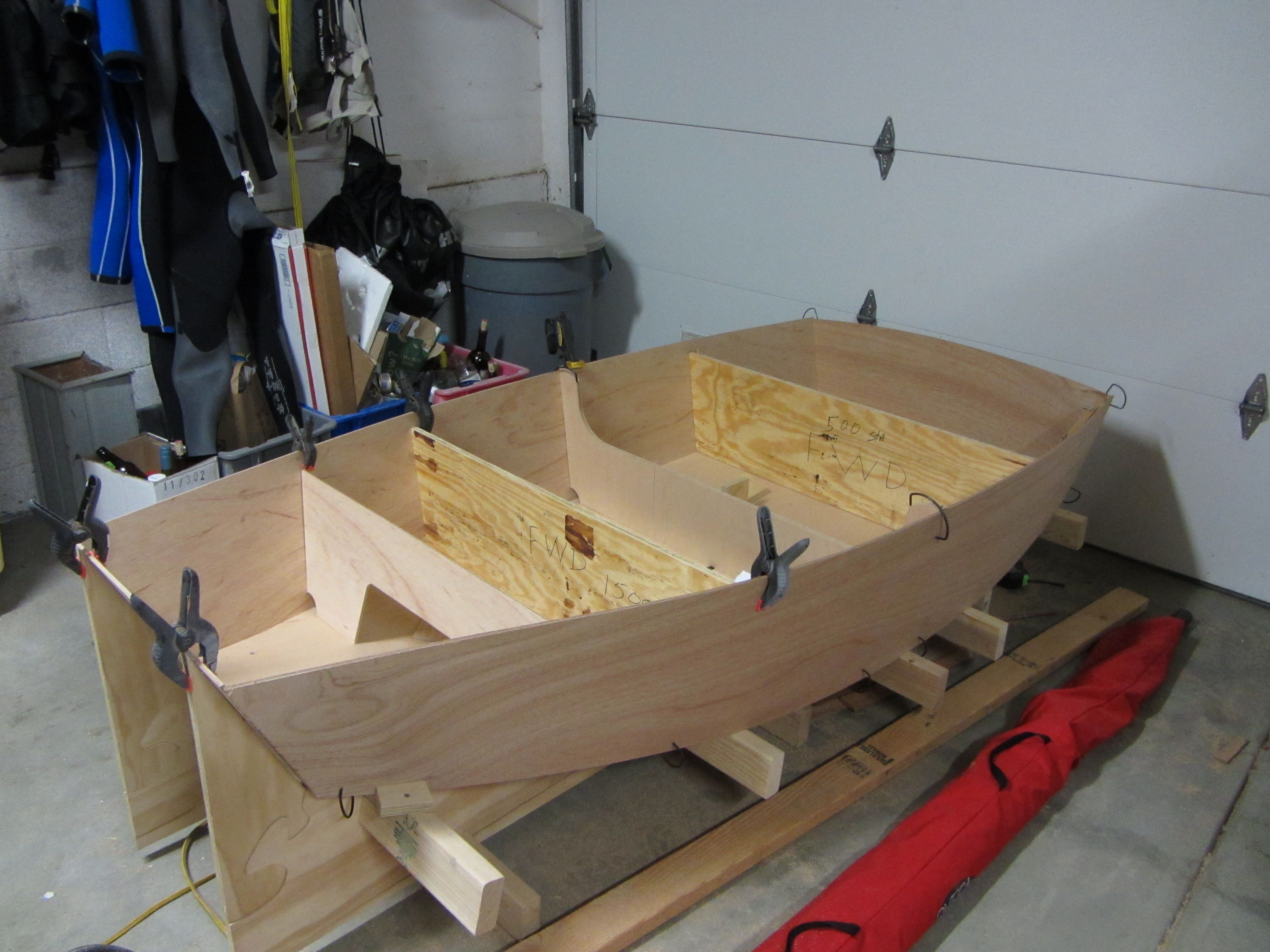

You now have a boat cut and ready for a little fitting. Bevel the edges of the bottom to the approximate angles of 15 degrees with a block plane and you are ready to start your build. I would recommend a dry fit of all parts prior to mixing epoxy. This doesn't take long and may save you a lot of trouble with messy epoxy.










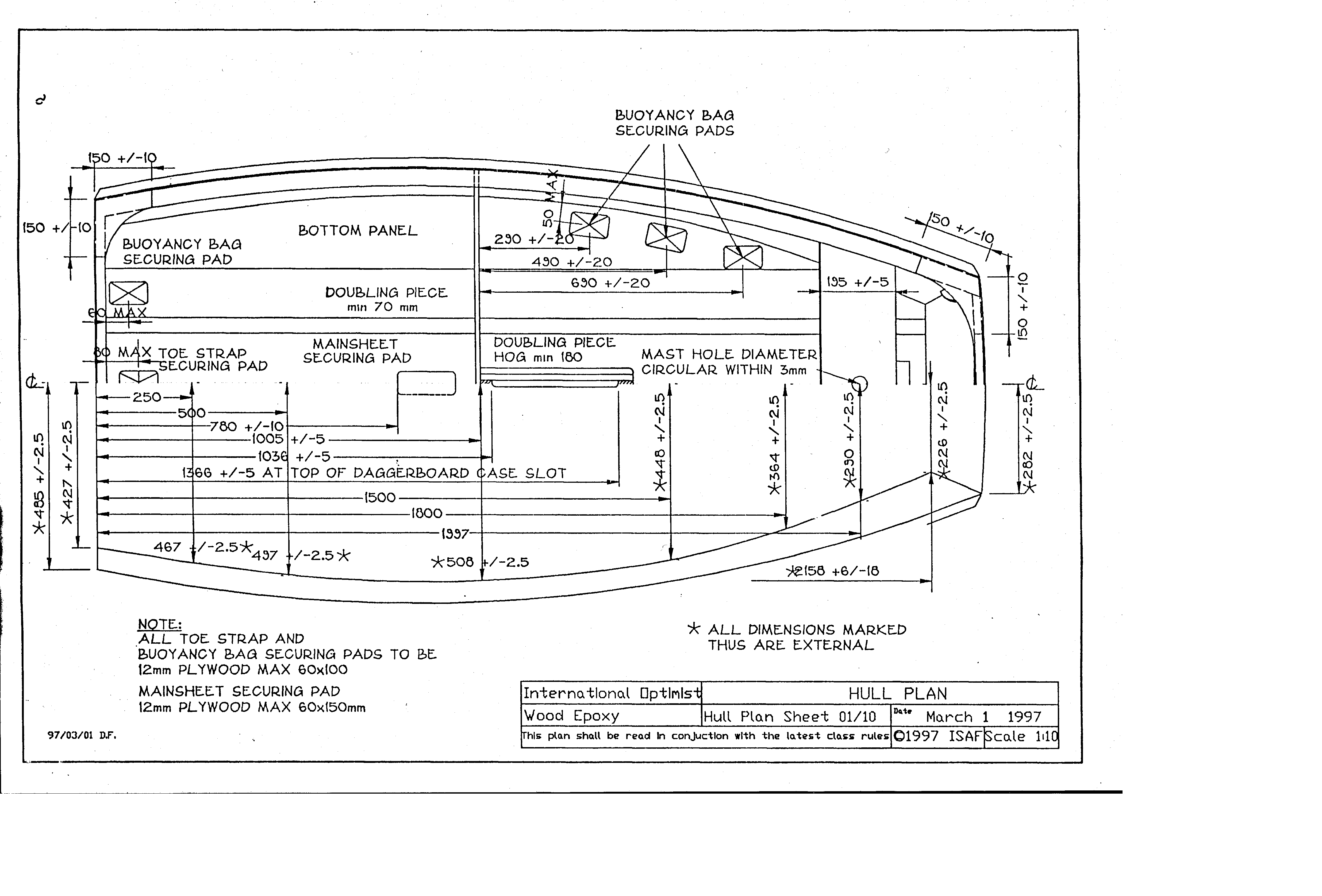


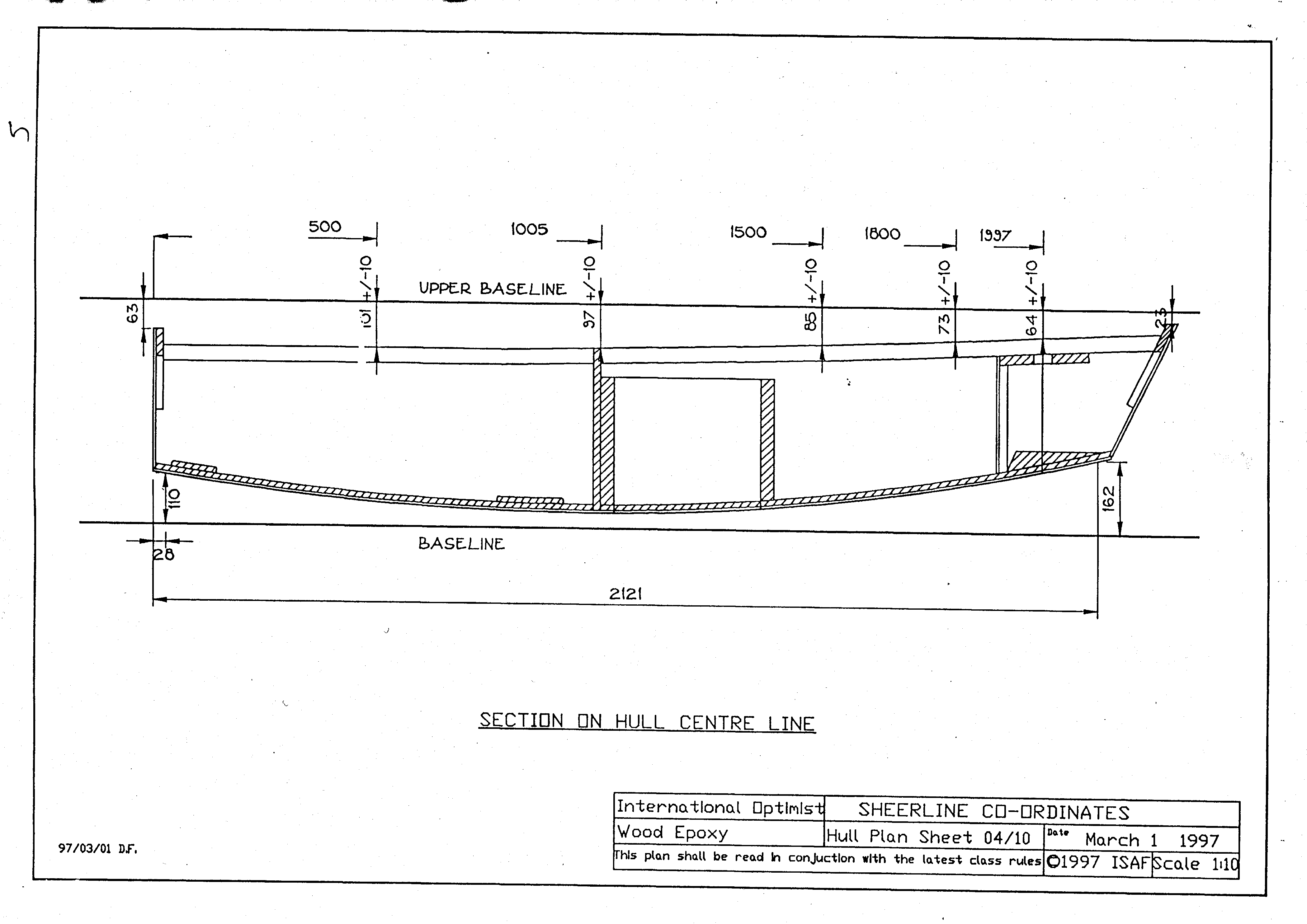

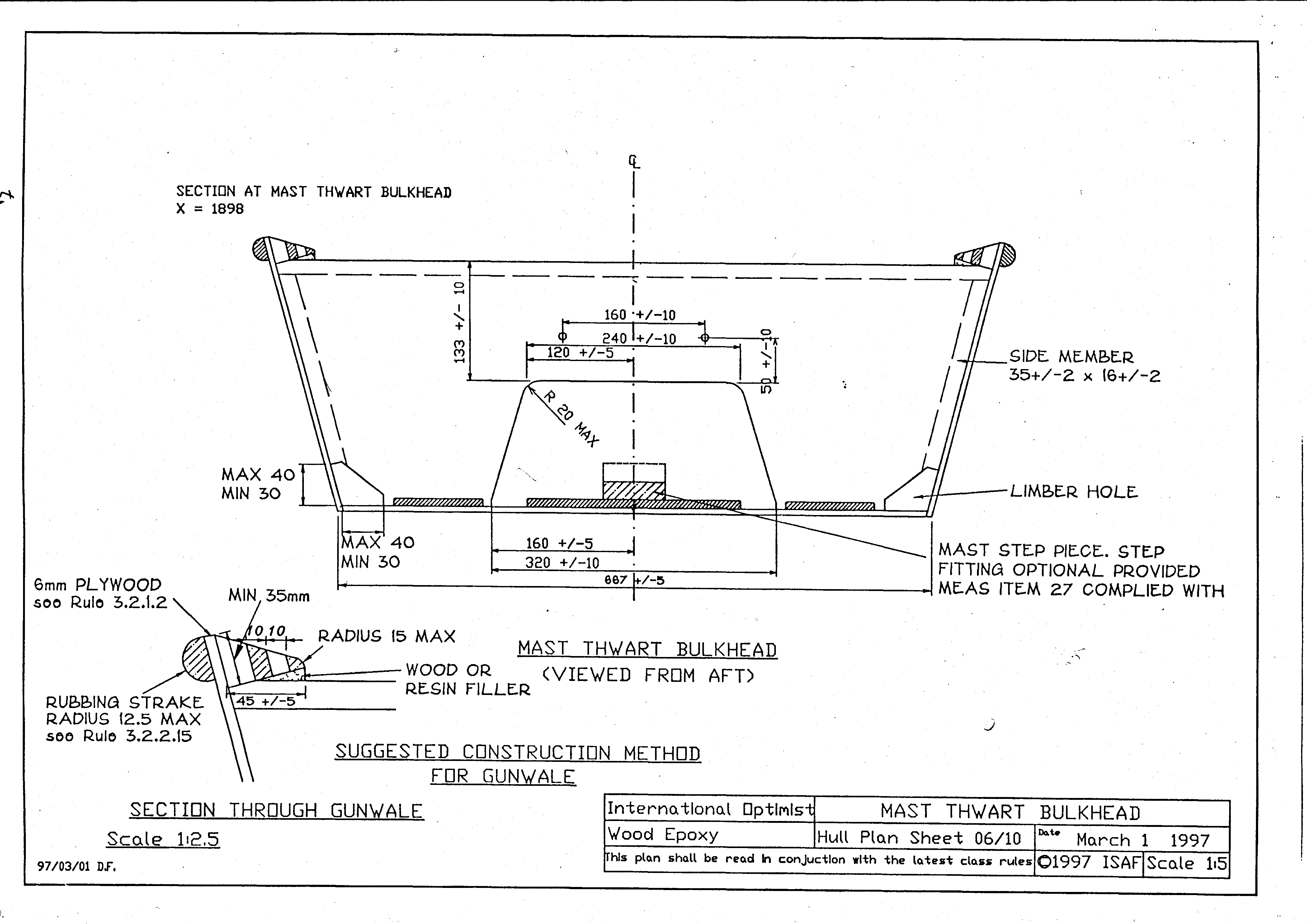
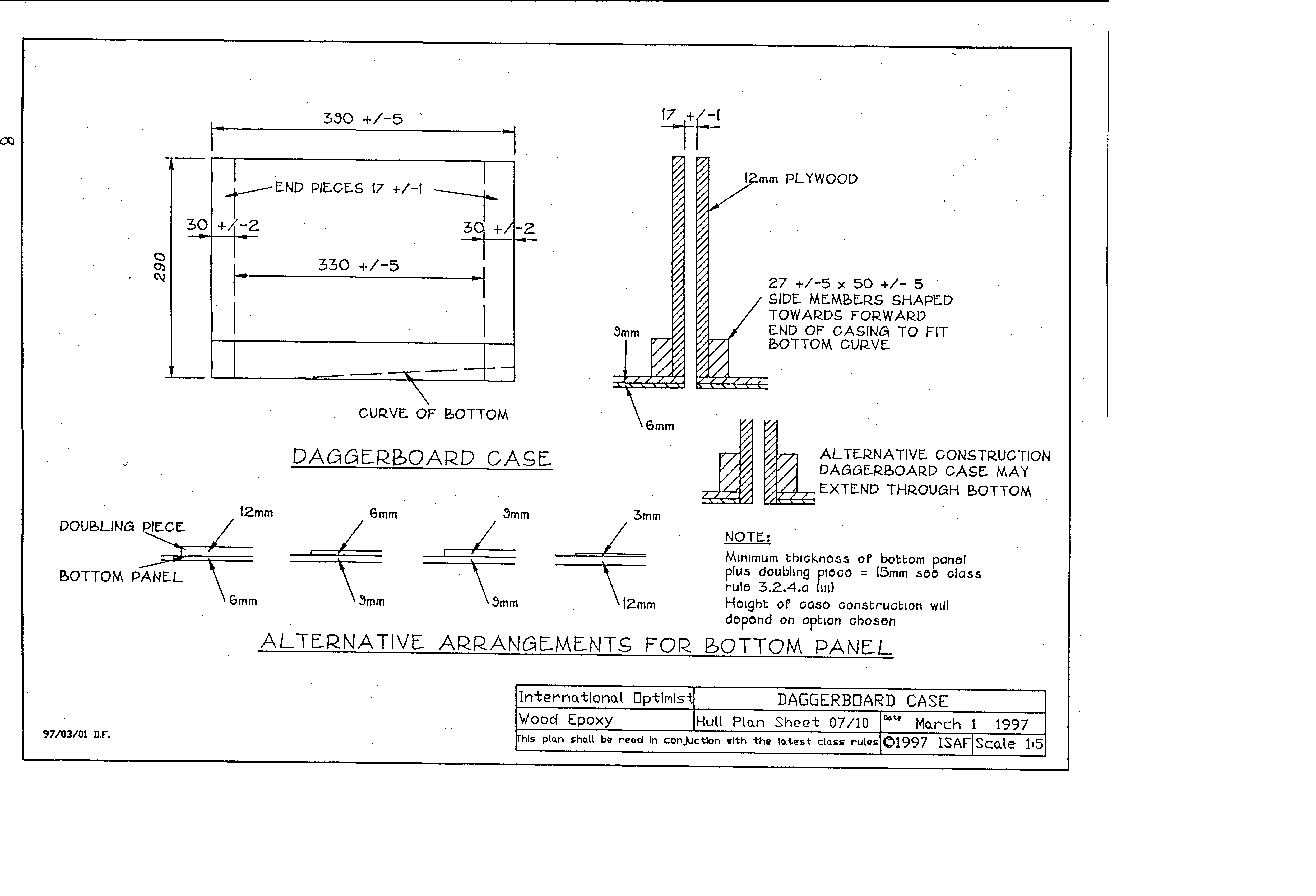
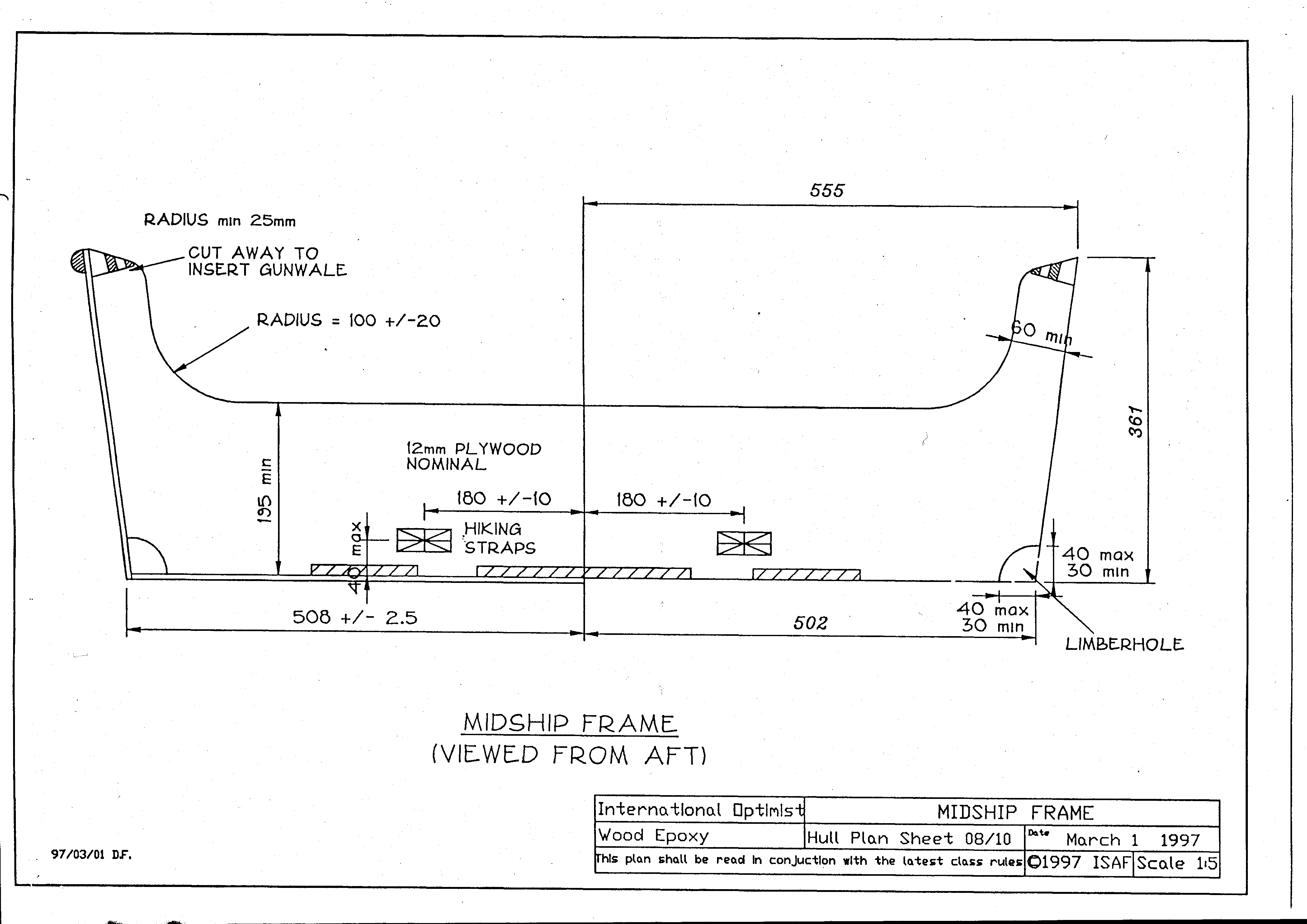

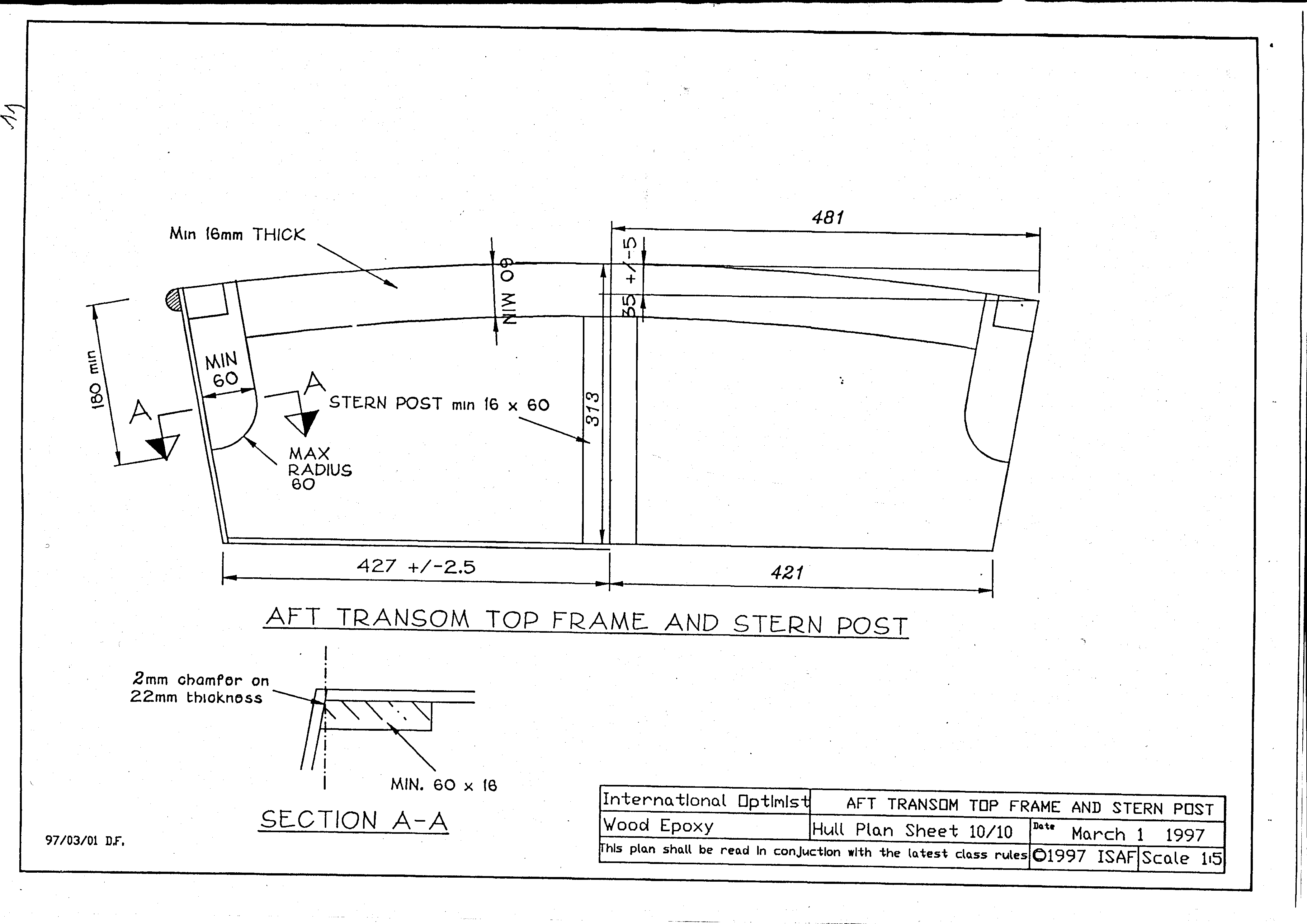
http://www.mauriprosailing.com/Optiparts-Optimist/Optiparts-Optimist.htm?gclid=CKHtt7O1t64CFQ9-hwodHBRhrA
Downloads
The sail can be home-made, as well, but with mass production the prices just are hard to beat. Again the spars can be made from PVC pipe, Wood or Aluminum tubing, but most can be purchased for a cheaper price than your time and investment. You probably won't need the hottest racing level gear until you see if your kids are in for it. Then watch out if they catch the bug! You will be one proud parent to have started them out on such a great and rewarding life of sailing.
http://www.mauriprosailing.com/Optiparts-Optimist/Optiparts-Optimist.htm?gclid=CKHtt7O1t64CFQ9-hwodHBRhrA